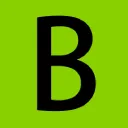3d Scene Editing AI Tool

What is Instruct-NeRF2NeRF and how does it work?
Instruct-NeRF2NeRF is a method for editing 3D NeRF (Neural Radiance Field) scenes using text instructions. It leverages a 2D diffusion model, InstructPix2Pix, to iteratively modify the input images used in reconstructing a NeRF scene. By rendering images from the scene, applying text-based edits through InstructPix2Pix, and replacing these with the original dataset images, the system refines the 3D scene to reflect the desired edits. This process engages continuously during NeRF's training, achieving more realistic and targeted scene modulations compared to previous methods.
Who are the creators behind Instruct-NeRF2NeRF and which institutions are they affiliated with?
Instruct-NeRF2NeRF was developed by a group of researchers including Ayaan Haque, Matthew Tancik, Alexei A. Efros, Aleksander Holynski, and Angjoo Kanazawa. They are affiliated with UC Berkeley, showcasing the collaborative effort between these esteemed researchers to present this innovative approach in editing 3D scenes using instructions, demonstrated during the ICCV 2023 conference.
What are some examples of scene edits achieved using Instruct-NeRF2NeRF?
Instruct-NeRF2NeRF facilitates a variety of realistic scene edits. Examples include transforming a scene's seasonal appearance from "Original" to themes like "Autumn," "Desert," "Midnight," "Snow," "Storm," and "Sunset." Moreover, it even showcases modifications in content such as altering a bear's species in the scene from a "Grizzly Bear" to a "Panda Bear" or a "Polar Bear." These modifications emphasize its capability to handle both environmental and object-level scene transformations effectively.
What is instruct-nerf2nerf.github.io?
Instruct-NeRF2NeRF is a tool designed for editing 3D scenes through text-based instructions. It builds on the Neural Radiance Fields (NeRF) framework, a technology used to generate 3D scenes from 2D images. By leveraging an image-conditioned diffusion model known as InstructPix2Pix, the system iteratively refines input images while simultaneously optimizing the corresponding 3D scene. This approach ensures that the resulting 3D model accurately reflects the specified edits.
How does instruct-nerf2nerf.github.io work?
Instruct-NeRF2NeRF enables the editing of 3D scenes through text-based instructions, following a structured process:
- Initial NeRF Training: The process begins by training a standard Neural Radiance Field (NeRF) using a set of images. This step generates a 3D representation of the scene.
- Editing with InstructPix2Pix: A diffusion model, InstructPix2Pix, is employed to make targeted edits. It modifies the input images based on the user’s text instructions while adjusting the underlying 3D scene accordingly.
- Iterative Updates: The system renders an image from a specific training viewpoint, applies the instructed edits using InstructPix2Pix, and substitutes the original image with the edited version. The NeRF model continues training with these updated images to refine the scene iteratively.
- Final Output: This iterative process produces a 3D scene that incorporates the specified edits, ensuring the result aligns with the user’s instructions while maintaining visual realism.
How much does instruct-nerf2nerf.github.io cost?
Instruct-NeRF2NeRF is an open-source project accessible on GitHub, meaning there is no charge for downloading or using the software itself. However, utilizing the tool may involve additional costs related to the hardware and software dependencies necessary for its operation. These could include a capable GPU, frameworks like PyTorch, and libraries such as tinycudann, which are essential for running the project effectively.
What are the benefits of instruct-nerf2nerf.github.io?
Instruct-NeRF2NeRF offers several notable advantages, particularly for users involved in 3D modeling and scene generation:
- Text-Guided Editing: Users can modify 3D scenes with text instructions, making it accessible even to those without expertise in 3D modeling.
- Enhanced Creativity: Natural language input allows for creative exploration and flexibility beyond the limitations of traditional 3D editing tools.
- Efficiency: The iterative process automates updates to the 3D scene, reducing the time and effort compared to manual editing.
- Integration with NeRF: Building on Neural Radiance Fields, it benefits from NeRF’s ability to render high-quality 3D scenes from 2D images.
- Open Source: As an open-source tool, it is free to use, customizable, and fosters community-driven development and innovation.
- Realistic Edits: Leveraging the InstructPix2Pix model ensures that scene modifications are both precise and realistic, preserving the scene’s authenticity.
What are the limitations of instruct-nerf2nerf.github.io?
While Instruct-NeRF2NeRF is an innovative tool, it does come with several limitations:
- Computational Demands: High computational power and memory are required, particularly for processing high-resolution images, making it less suitable for standard hardware.
- Training Data Requirements: A substantial amount of training data is needed to generate accurate 3D representations, which can be time-consuming and resource-intensive to gather and process.
- Resolution Constraints: Working at higher resolutions may result in out-of-memory errors and performance issues. Lower resolutions are generally recommended for smoother operation.
- Complexity of Edits: While text-based editing is powerful, highly detailed or complex modifications might still necessitate manual intervention or additional tools.
- Dependence on Initial NeRF Quality: The final output's accuracy is tied to the quality of the initial NeRF model. Flaws or errors in the initial training can carry over to the final edited scene.
- Learning Curve: Despite its user-friendly design, users may still need time to learn how to effectively use text instructions to achieve precise results.



















